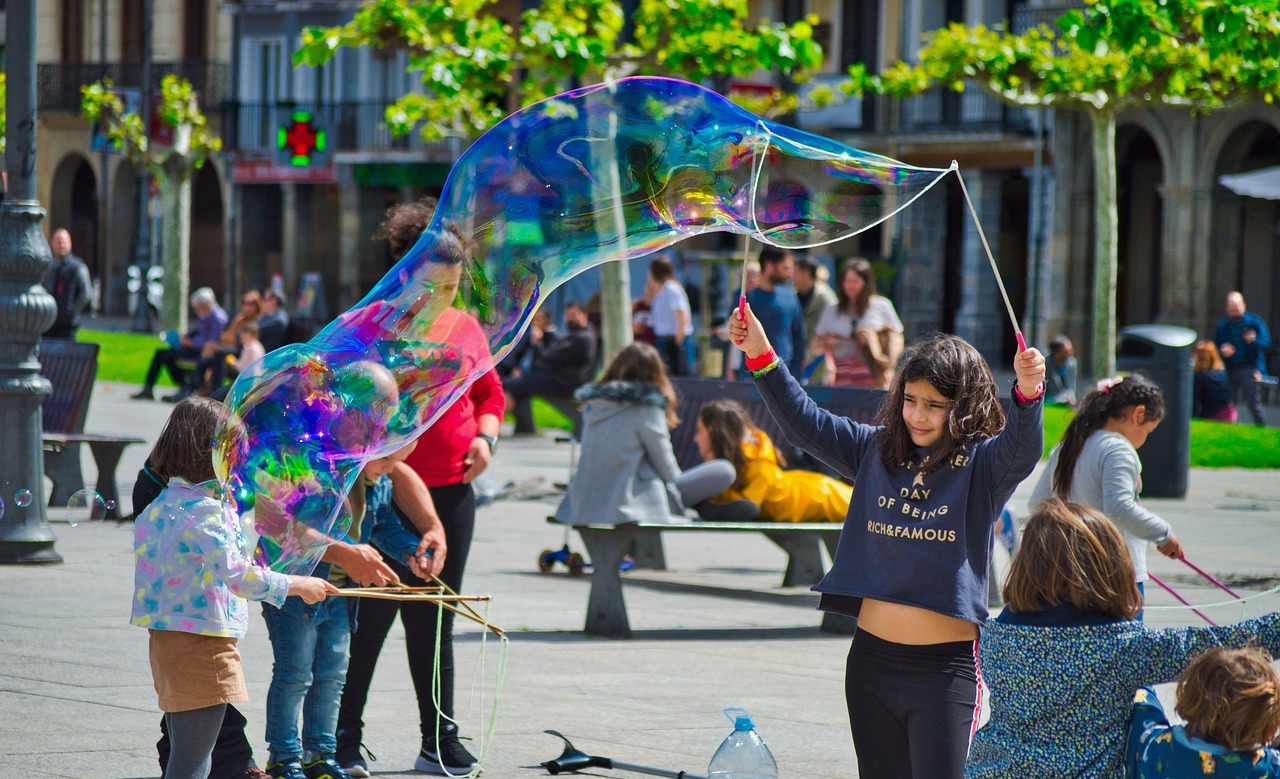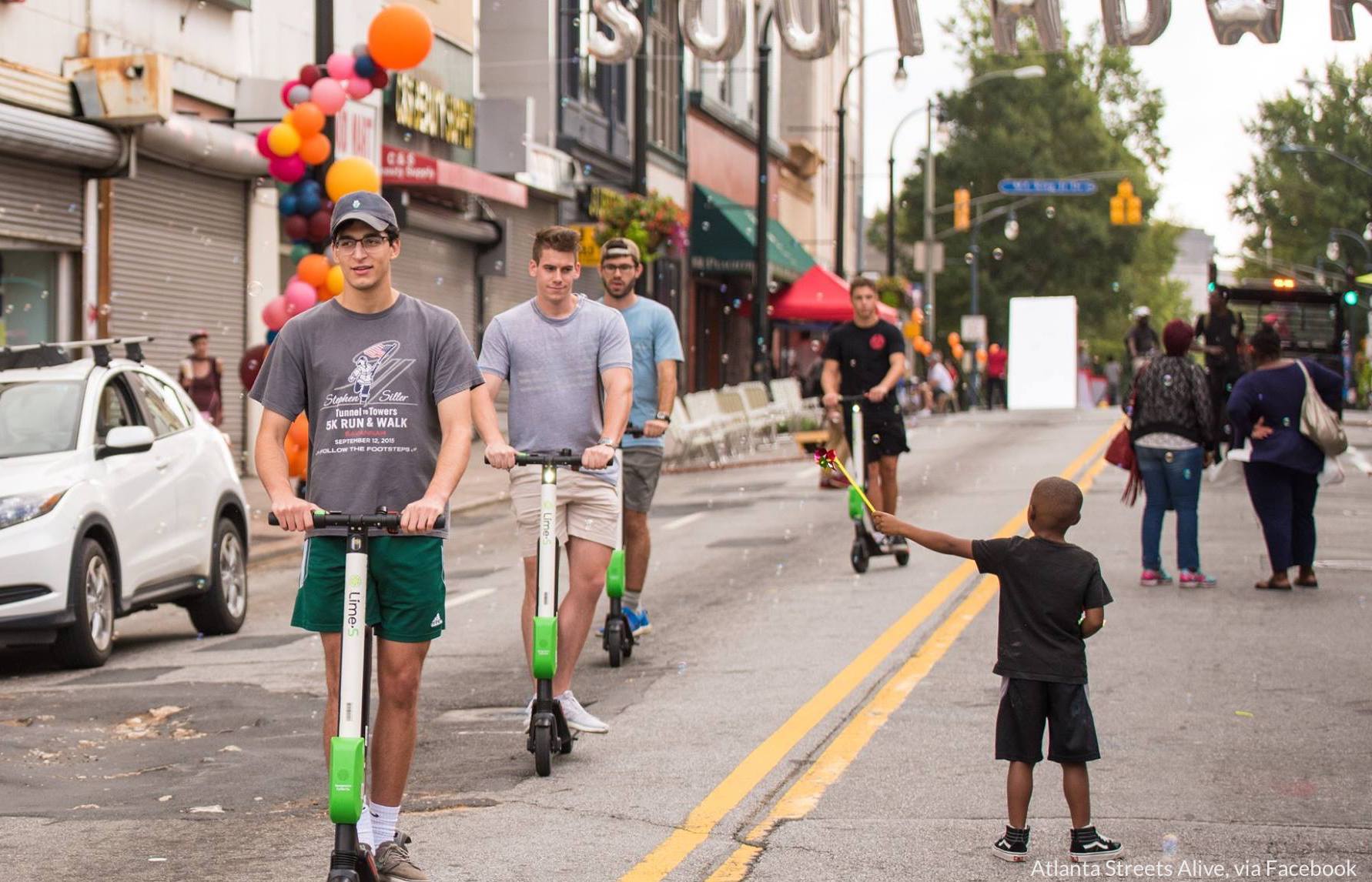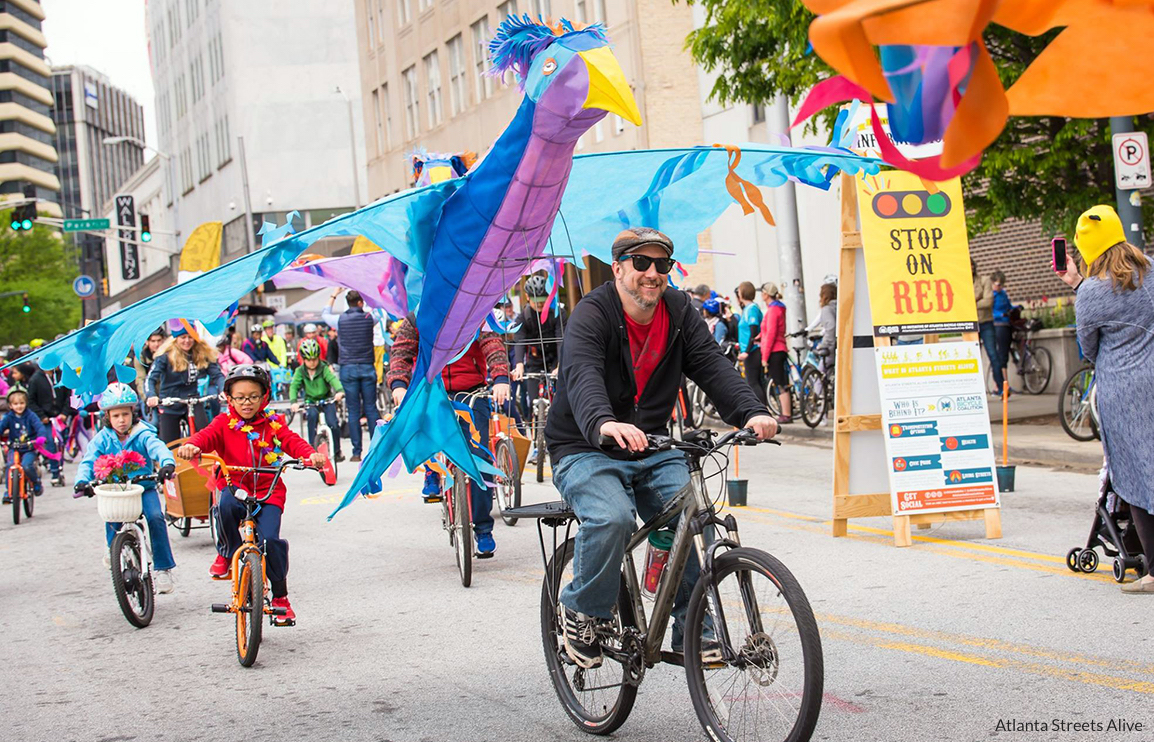
News
By Sean Doyle, September 13, 2019
 greater diversity—of race, income, and yes, age—can lead to better outcomes for everyone. More inclusive communities have better education outcomes, less crime, are more economically productive, and have a "high level of civic cohesion." There's also another benefit to being exposed to and interacting with people that are different from yourself: developing empathy. Being exposed to people different from you, especially at a young age, is vital for this emotional development.
greater diversity—of race, income, and yes, age—can lead to better outcomes for everyone. More inclusive communities have better education outcomes, less crime, are more economically productive, and have a "high level of civic cohesion." There's also another benefit to being exposed to and interacting with people that are different from yourself: developing empathy. Being exposed to people different from you, especially at a young age, is vital for this emotional development.
By endeavoring to create a place that's great for families, we can create a place that's great for everyone. Here's how.
A top consideration for families (or people considering having children) when choosing where to live is the quality of the public school system. For families that have the ability or means to move, school quality is often the number one factor causing them to leave the city. While education policy is a bit outside of Smart Growth America's wheelhouse, where and how schools get built certainly isn't.
Schools can and should be an important civic asset—assuming the school is actually accessible to people and well integrated into the community. In most growing places, there’s a stated bias towards building new schools on the outskirts of town where land may be cheaper and more expansive but which comes with extra infrastructure and transportation costs. State policies often drive this: " states have some form of minimum acreage standards, which often demand sites so large they can be found only in less developed parts of communities or outside of town."
These policies are partially responsible for the dramatic decline in the numbers of kids walking or biking to school; from 1969 to 2009, the share of grades K-8 children that walked or biked to school dropped from 48 percent to 13 percent. How we design newer streets is another culprit, but it’s also a self-reinforcing loop: Requiring bigger school lots on the edge of town necessitates new streets which almost always prioritize high-speed traffic and often lack crosswalks and sidewalks, which leads to fewer kids walking, which leads to more space for cars parking and dropping off, etc. ad infinitum.
But one alternative would be renovating or retrofitting existing buildings within a developed area for a school—they don’t always have to be built brand new. When well-situated within the communities they serve, schools can be accessed by walking, biking, or transit, encourage involvement in the community, promote economic development, and compliment other efforts to make cities work better for families.
Done right, the best schools serve as an asset for the whole community in addition to their students. They may incorporate health services and childcare facilities on site or share athletic fields and playgrounds with the public. After school programs catering to students can be offered concurrently with GED classes, language courses, computer training, and other activities and services. The school building could also be a venue for community meetings and engagement from government departments and community organizations. And with childcare on site, that can help make such meetings more accessible to more people.
Building a city for families means creating places for children, teenagers, adolescents, and adults of all ages. One thing that everyone could use more of though is green space. Small, public parks are one way to create a more livable area for people where big swaths of land are unavailable. After having her first child, Smart Growth America's former Communications Director Alex Dodds opined, "for a long time I thought parks in the city were like a mint on your pillow — a nice touch but not strictly necessary. Turns out that green space is actually pretty high on the list of Things You Will Want to Give Your Kid Immediately. Sitting under a tree looking out at green grass soothed both of our jangled nerves."
Street trees are another great way to bring more green into the city. There are so many benefits to trees—cleaner air, cooler sidewalks, calmer streets, and better mental health to name a few—but urban tree cover is declining. A concerted effort to bring back and grow the number of trees in cities will help make them more livable for people of all ages.
In planning public spaces, teens in particular can be a challenge as Brent Toderian, former chief planner for Vancouver, explains. They often end up at "malls, un-programmed parks, or transit stations, because there's nothing that's been made with them in mind." Alternatively, "you can have places actually made for teenagers, preferably involving teenagers in the design process—things like skateboard parks; plazas with activities like music and games for teens instead of young children...spaces with food as an option. And of course don't forget the wifi." Teenagers are just one example, but including a variety of ages in planning can help create a city that is welcoming to them as well.
Streets are of course the single largest public space in any city, which leads us to transportation.
With the advent of the automobile and the rise of the suburbs, cities traded walkability for car-oriented streets, retrofitting urban areas for driving. Today, even many "urban" streets are so car oriented that the city is effectively indistinguishable from the suburbs.
Reorienting public spaces to serve people instead of vehicles (i.e. focusing on moving a quantity of people rather than a quantity of vehicles) would fundamentally improve cities, making them safer, more prosperous, and more efficient. Wider sidewalks and calmer, slower streets with more frequent crossings makes walking a safer and more pleasant experience and draws people to them; more eyes on the street improves safety. Streets should serve everyone who uses them—whether they're walking, biking, rolling, driving, scooting, or taking transit. Considering that the leading cause of death for children and adolescents are traffic fatalities, Complete Streets are an essential component of a family-friendly city.


Most people view streets as permanent, immutable fixtures. But some communities have begun organizing open streets events—days where streets are closed to cars, usually during a weekend—that allow residents and visitors to imagine what streets could be like if we prioritized people first. Scenes from Atlanta Streets Live are pictures above. Pilot projects with inexpensive materials, like those that we've helped execute through our Safe Streets Academy, are another way for cities to test new, safer street designs, evaluate their impact, and collect public feedback.
After walkability, frequent, reliable, and accessible transit was among the most popular ideas for family-friendly cities. In compact cities, transit is a geometric necessity; there simply isn't enough space for everyone to drive (or be driven) in their own vehicle. Transit is also more affordable than a car and can give teens and other young adults more freedom to move around their hometown.
All too often though, transit is simply not reliable or frequent enough to be useful, particularly during off-peak commuter hours when so many family-oriented trips are taken. And accessibility is key, both for people with disabilities and for parents with strollers. Treating transit service like essential and critical infrastructure would do wonders not just for families but everyone in cities.
Bottom line: we need more. The single biggest thing that cities can do to make housing more accommodating for families is to increase the supply and variety. With walkable urban areas in high-demand and a dearth of supply, housing prices are rising to levels that are out of reach for the average person, families included. In many cities, huge swaths of land are zoned exclusively for single-family, detached housing effectively reserving that space for a small (predominantly white and wealthy) minority of residents; legalizing more types of housing is critical.
While some places have taken small steps in recent years to legalize accessory dwelling units (ADUs, aka granny flats), that won't fix the supply problem on its own. Missing middle housing—everything from duplexes to low-rise apartment buildings—is especially needed (it's called missing middle for a reason) and is particularly well suited as an incremental addition to today's current low-density neighborhoods. Cooperative housing like bungalow courts or co-housing can also be particularly suited to families by creating semi-private communal or park areas. These spaces are another option for kids to play outside that don’t require a personal private yard or a public park within walking distance and can enable parents to share child supervision responsibilities.
But housing is one area in which families do need some special consideration. While the construction of studio and one-bedroom apartments/condos has catered to young professionals and older adults who are downsizing, there have been fewer two-bedroom units and even fewer three- or four-bedroom homes built in most growing cities. If we want families to live in cities, we need to build housing that will fit a family.
Building places that are holistically family-friendly goes far beyond the built environment, but the built environment can help (or hinder) a city's efforts. Great schools, inclusive public spaces, multiple transportation options, and a variety of housing choices can help cities create diverse, inclusive communities that support families and society at large. This list of issues, while long, is hardly exhaustive. Together, they demonstrate some of the ways in which we often overlook or take for granted families and their unique needs in cities. Often it's about simply providing more choice where we've favored one transportation option or housing style to the detriment of the greater good.
That's not to say that every neighborhood in a city or urban area needs to cater to families, but families shouldn't have to flee to more suburban areas to find a place that better meets their needs. To say nothing of the families that can’t move and then are stuck in places where streets aren’t safe for their kids, housing is too small, or lacking in green space. As the list above has shown, in creating a place that works better for families, we can create a place that works better for everyone.
Quite simply, family-friendly places are people-friendly places.
Related News

© 2025 Smart Growth America. All rights reserved
Site By3Lane Marketing








